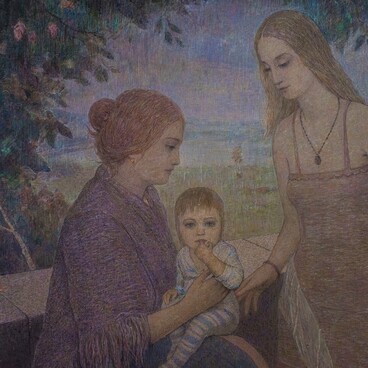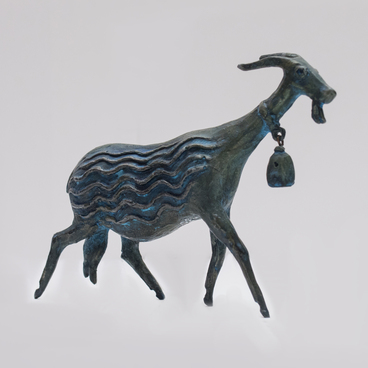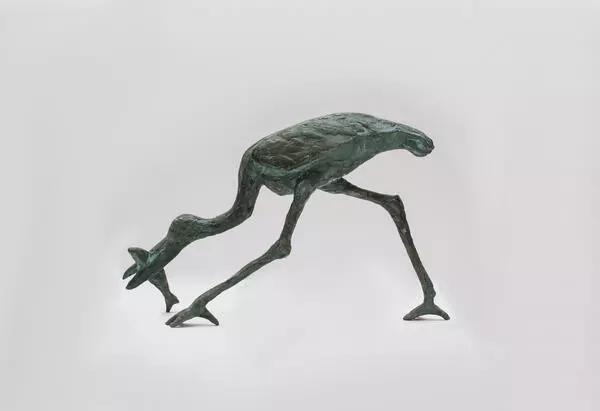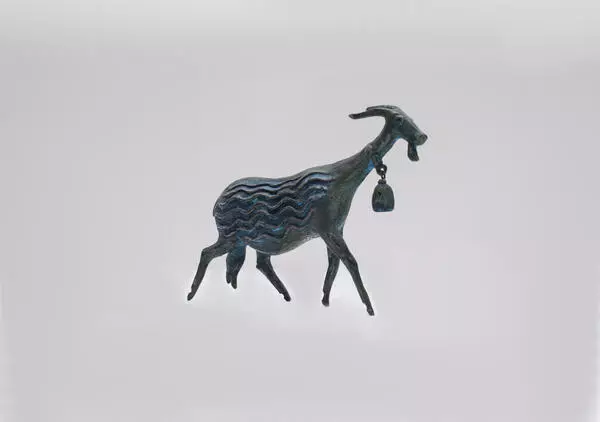The metal sculpture “Standing Antelope” was made by the animal sculptor Andrey Martz in 1993. He often experimented with the composition, invented the components and ingredients for a future alloy himself.
The antelope has thin long legs and equally long horns. The head of the animal is turned to the left, it looks at the viewer with curiosity. The antelope is static and shows by its appearance and body shape that it is not going to run away.
The elongated horns of the animal resemble those of the oryx or scimitar-horned antelope. It is also referred to as the gemsbok. This antelope lives in the desert and semi-desert areas of Africa and the Arabian Peninsula, most often oryx can be found in East and South Africa.
There are four species of scimitar-horned antelopes: the Common Oryx, the Saharan Oryx, the Arabian Oryx, and the East African Oryx, which some researchers classify as a subspecies of the Arabian Oryx. The Andrey Martz antelope is a collective image of this subfamily.
All Oryx antelopes are adapted to live in an arid environment. They can withstand their body temperature rising to 46 degrees Celsius without any damage and go without water for several days at a time. In addition, the Arabian Oryx can sense rain and fresh grass and move towards them in the right direction.
The Oryx antelope is a true spy animal. Their large, widely spaced ears work like radars, picking up even the slightest rustle in the grass. They also have a keen sense of smell, and the eyes on either side of their muzzle allow them to see if a predator is on the prowl.
For greater safety, antelopes live in herds, forming groups of 6 to 40 individuals. The oryxes form a hierarchy: one of the females leads the herd and the strongest male closes the procession and guards everyone.
Both male and female Oryx antelopes wear long, slender horns that can be up to 1.5 meters in height, and the young ones are born with horns as well. The Oryx uses the horns as a weapon against predators: fighting off a lioness, the Oryx can inflict deep puncture wounds. Oryxes also use their horns when fighting each other, however, they do not inflict damage on their fellows.
Originality, grotesque and insight in rendering animal characters are typical for the sculptures of Andrey Martz.
The antelope has thin long legs and equally long horns. The head of the animal is turned to the left, it looks at the viewer with curiosity. The antelope is static and shows by its appearance and body shape that it is not going to run away.
The elongated horns of the animal resemble those of the oryx or scimitar-horned antelope. It is also referred to as the gemsbok. This antelope lives in the desert and semi-desert areas of Africa and the Arabian Peninsula, most often oryx can be found in East and South Africa.
There are four species of scimitar-horned antelopes: the Common Oryx, the Saharan Oryx, the Arabian Oryx, and the East African Oryx, which some researchers classify as a subspecies of the Arabian Oryx. The Andrey Martz antelope is a collective image of this subfamily.
All Oryx antelopes are adapted to live in an arid environment. They can withstand their body temperature rising to 46 degrees Celsius without any damage and go without water for several days at a time. In addition, the Arabian Oryx can sense rain and fresh grass and move towards them in the right direction.
The Oryx antelope is a true spy animal. Their large, widely spaced ears work like radars, picking up even the slightest rustle in the grass. They also have a keen sense of smell, and the eyes on either side of their muzzle allow them to see if a predator is on the prowl.
For greater safety, antelopes live in herds, forming groups of 6 to 40 individuals. The oryxes form a hierarchy: one of the females leads the herd and the strongest male closes the procession and guards everyone.
Both male and female Oryx antelopes wear long, slender horns that can be up to 1.5 meters in height, and the young ones are born with horns as well. The Oryx uses the horns as a weapon against predators: fighting off a lioness, the Oryx can inflict deep puncture wounds. Oryxes also use their horns when fighting each other, however, they do not inflict damage on their fellows.
Originality, grotesque and insight in rendering animal characters are typical for the sculptures of Andrey Martz.





